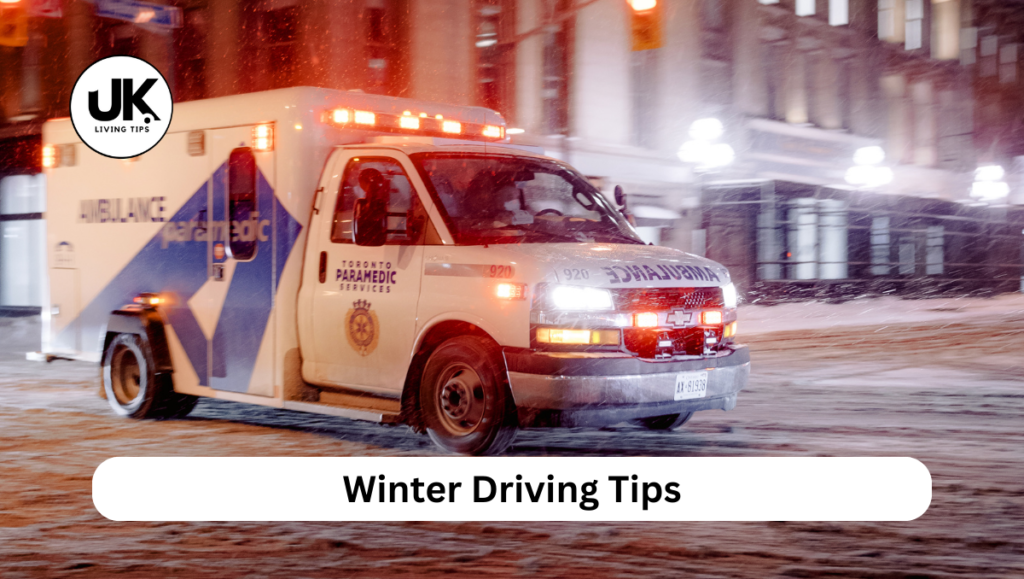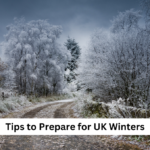Winter Driving Tips
Winter driving tips in the UK can be a bit of a challenge with icy roads, foggy mornings, and the occasional snowstorm. But with the right preparation and know-how, you can safely navigate through the winter months. Whether you’re a seasoned driver or new to winter driving, these tips will help you stay safe and confident on the roads.
Overview
1. Prepare Your Vehicle
Check Your Tyres
Your tires are your car’s only contact with the road, so make sure they’re up to scratch. In winter, it’s especially important to have tires with good tread depth. Consider fitting winter tires if you frequently drive in snowy or icy conditions. They offer better grip and control in cold weather.
Top Up on Fluids
Ensure that your car’s antifreeze levels are adequate. Antifreeze helps prevent the engine from freezing up in cold temperatures. Also, check that your windscreen washer fluid is topped up with a winter mix to prevent it from freezing and to keep your screen clear of grime and salt.
Read also: Winter tips for newcomer in the UK
Test Your Battery
Cold weather can affect your car battery’s performance. If your battery is more than a few years old, have it tested to ensure it’s in good shape. A failing battery can leave you stranded, especially in the cold.
2. Keep Your Car Clean and Clear
Clear Ice and Snow Before Driving
Always clear ice and snow from your windscreen, mirrors, and lights before setting off. This helps ensure you have good visibility and that your lights are working properly. A frost scraper or de-icer is essential for this task.
Keep Your Windows Fog-Free
Winter driving often means dealing with foggy windows. Use your car’s defogging system to keep the windows clear. You can also use anti-fog products on the inside of your windows to prevent condensation from forming.
3. Drive with Caution
Slow Down and Increase Following Distance
When driving in winter conditions, it’s crucial to reduce your speed. Roads can be slippery, and your stopping distance will be longer than usual. Increase the distance between you and the vehicle in front to give yourself more time to react.
Avoid Sharp Turns and Sudden Braking
Smooth driving is key in winter. Avoid sharp turns and sudden braking, as these can cause your wheels to skid. Instead, steer gently and brake slowly to maintain control of your vehicle.
4. Be Prepared for Emergencies
Keep an Emergency Kit in Your Car
Winter weather can be unpredictable, so having an emergency kit in your car is a smart idea. Include items such as a blanket, a torch, spare batteries, a first aid kit, snacks, water, and a shovel. This kit will help you if you get stuck or stranded.
Know What to Do If You Get Stuck
If you find yourself stuck in snow or ice, stay calm. Try to gently rock your car back and forth to free it, and use a shovel or other tools to clear away snow from your tires. Avoid spinning the wheels as it can make the situation worse.
5. Monitor Weather Conditions
Check the Weather Before You Travel
Before heading out, check the weather forecast for your route. Knowing what to expect can help you prepare better and decide if your journey is necessary. If conditions are particularly bad, it might be wise to delay or cancel your trip.
Be Aware of Road Conditions
Keep an eye on local traffic reports and road conditions. Websites and apps can provide real-time updates on road closures, accidents, and traffic delays, helping you plan a safer route.
6. Practice Defensive Driving
Stay Alert and Avoid Distractions
Winter driving requires extra attention. Stay alert and avoid distractions such as using your phone or adjusting the radio while driving. Keep your focus on the road and be prepared for sudden changes in conditions.
Be Mindful of Other Road Users
Remember that other drivers may not be as prepared as you. Be cautious and give extra space to vehicles that seem to be struggling with the conditions. Also, watch out for pedestrians and cyclists who may be more difficult to see in winter weather.
7. Prepare for Icy Conditions
Use Your Car’s Traction Control
If your car is equipped with traction control, make sure it’s activated. This feature helps prevent wheel spin on slippery surfaces, giving you better control and stability.
Drive in Higher Gears
When driving on icy roads, use higher gears to reduce the likelihood of wheel spin. This helps maintain better traction and control, especially when starting from a stop.
8. Know How to Handle Fog
Use Fog Lights Wisely
If you’re driving in foggy conditions, use your fog lights if you have them. They help illuminate the road directly in front of you. Remember to turn them off when visibility improves to avoid blinding other drivers.
Keep Your Speed Steady
In fog, it’s important to keep your speed steady and avoid sudden changes. Fog can drastically reduce visibility, so driving at a slower pace gives you more time to react to any obstacles.
Conclusion
Winter driving in the UK comes with its own set of challenges, but with the right preparation and cautious driving habits, you can navigate the season safely. Make sure your vehicle is in top condition, adjust your driving style to suit the weather, and always be prepared for the unexpected. Stay safe out there and enjoy the winter weather!



